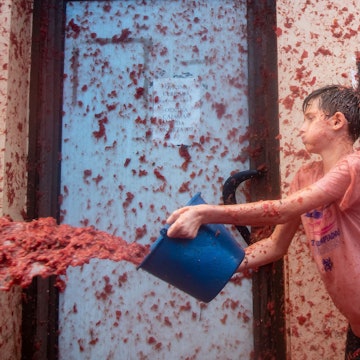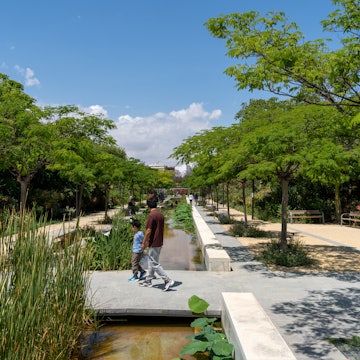
Valencia and Alicante: beaches, barrios and otherworldly buildings
Oct 26, 2017 • 6 min read

Ciudad de las Artes y las Ciencias
With year-round sunshine, huge, sandy beaches, gorgeous scenery and vibrant, world-class cities, the Valencia region can pretty much guarantee most of what you want from a trip to Spain. And thanks to multiple bus and train connections, it’s easy to tackle its two biggest cities – the dynamic namesake capital Valencia and up-for-it beachside Alicante – on a single trip.
Whether you're a culture hound, foodie, beachgoer or partyer, you’re bound to find something in one of these urban gems to get excited about.

Alicante
Alicante is an arrival point for many holidaymakers, as its airport serves lots of surrounding resorts. But this lively, easy-going city is well worth a visit in its own right. Let’s be honest, most Spanish cities serve up a decent night out, but this one, with its kind climate and serendipitous natural setting, has more of a buzz than most. At weekends, head to the handsome old quarter (known as El Barrio) for bars around Catedral de San Nicolás; or Paseo del Puerto, by the sea, runs the whole gamut of options from casinos to clubs. Calle Castaños, leading up from the waterfront through the city centre, offers a more laid-back scene during the week.
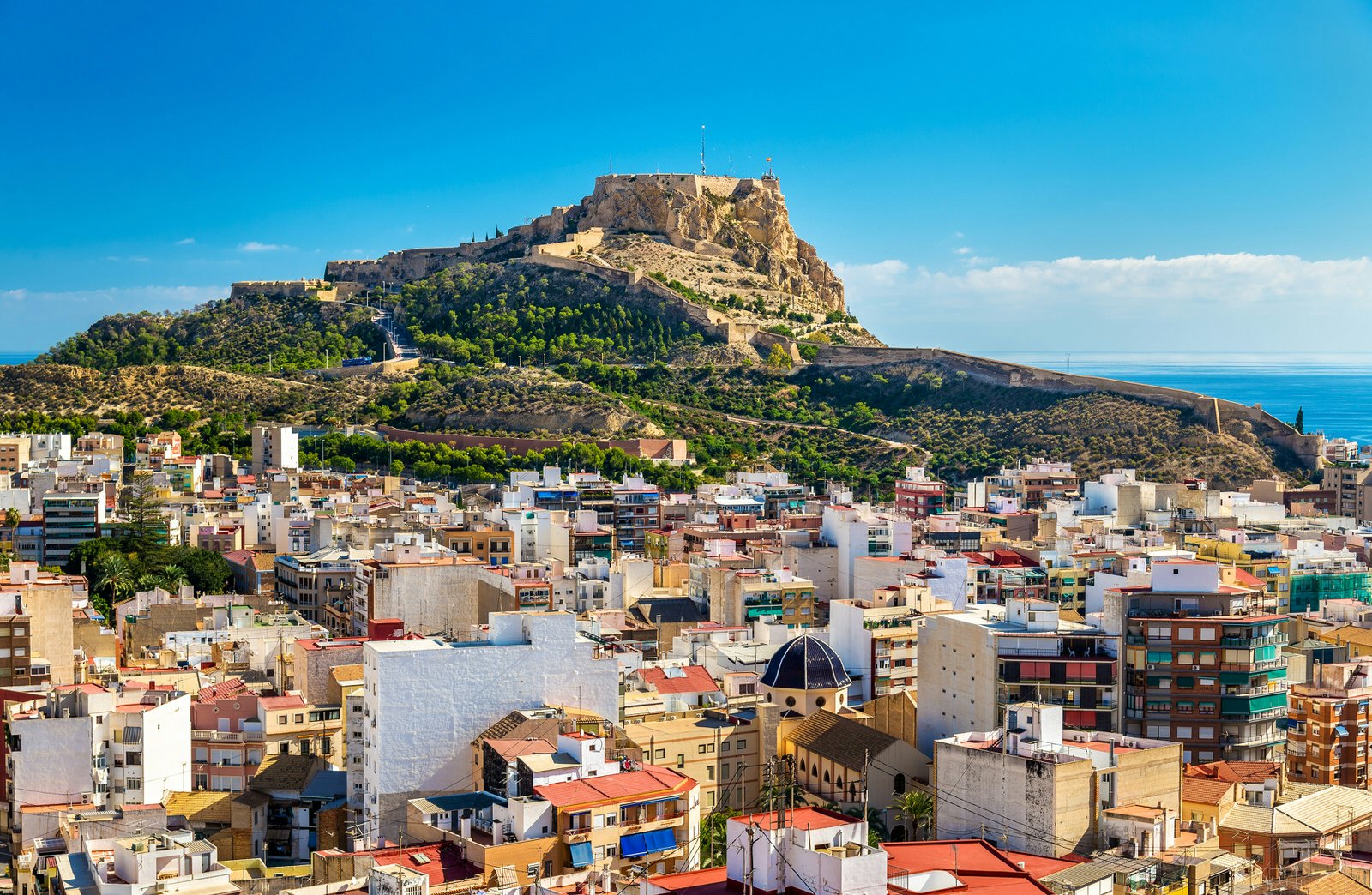
Castillo de Santa Bárbara
Alicante is a city that lends itself well to walking, whether that’s through the old town or along the fabulous waterfront promenade, Esplanada d’Espanya. You can even walk up to the jewel in the city’s crown, the Castillo de Santa Bárbara, which occupies a dramatic location atop a hill high above the city (though it might be a smart move to avoid the strenuous hike by getting the lift from opposite the beach). This 16th-century fortification is no place to avoid the crowds, but come up here for sunset and you’ll find it abuzz with locals out for an evening walk or kids playing football, and you can savour mesmerising views over the coast and inland.

Museums and the Mercado Central
For a culture fix, don’t miss two standout museums: the Museo de Arte Contemporáneo de Alicante, which has work by Miró and Picasso among its collection, and the Museo Arqueológico Provincial, recounting the city’s history through ceramics, art and other exhibits. A highlight much more in the here-and-now is Alicante's wonderful Mercado Central, which is a riot of sights, smells, sounds and tastes; and, if you fancy an afternoon tipple to go with your fresh fruit and octopus, even has a vermouth bar.

Beaches and festivities
Alicante makes the most of its wonderful coastal location with the attractive, sandy Playa del Postiguet. Like much of the city, it can be jam-packed at weekends in summer; while still an appealing spot to kick back on the sand, you’re better off heading northeast to out-of-town Playa de San Juan if you’re after more space.
If you can, time your visit for 20-24 June; that’s when the city’s biggest festival, Hogueras de San Juan, takes place. A few days of parades and heavy revelry reach a crescendo with the burning of effigies on the night of 23 June.
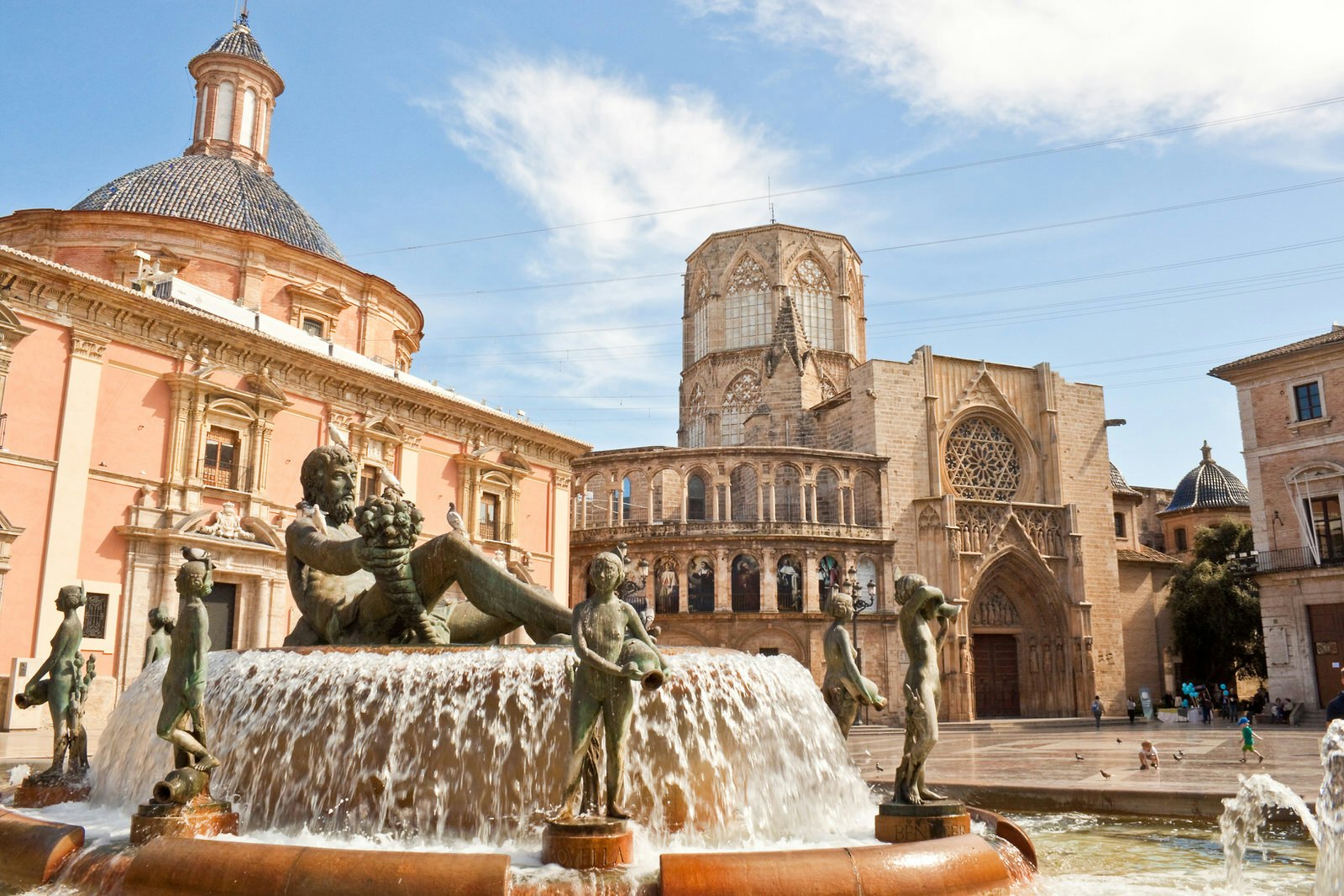
Valencia
A rich history, fascinating contemporary attractions, exceptional restaurants and nightlife, huge golden beaches – Spain’s third-biggest city has the lot. There are 11 daily trains (journey time 1.5-2 hours, tickets €17-30) and more than 10 buses (from 2. 5 hours, €21-25) making the journey to Valencia from Alicante.
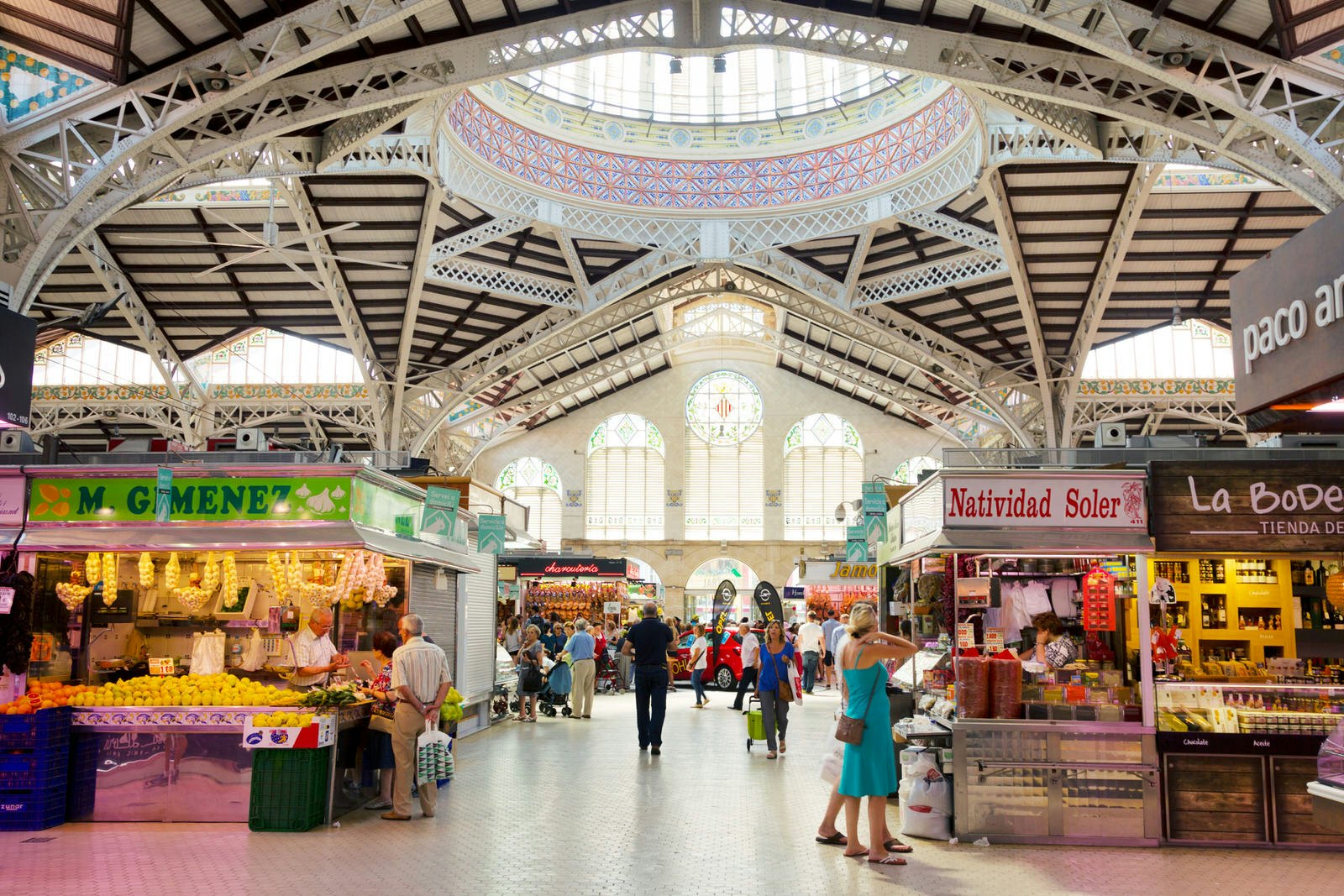
Ciutat Vella and Catedral
Your first port of call is likely to be the Ciutat Vella (Old Town), which has busy, imposing Plaza de la Virgen at its heart. Here you’ll find the Catedral de Valencia, dating from the 13th century and mainly Gothic in style. It is home to a Roman agate cup that is said (by some) to be the Holy Grail. Scale the 207 steps of El Miguelete bell tower for excellent city views all around.
Other Ciutat Vella highlights are La Lonja, the city’s 15th-century silk exchange and a Unesco World Heritage Sight, and the superb Mercado Central, which has all the tantalising produce you’d expect from a Spanish market in a stunning Modernista building.
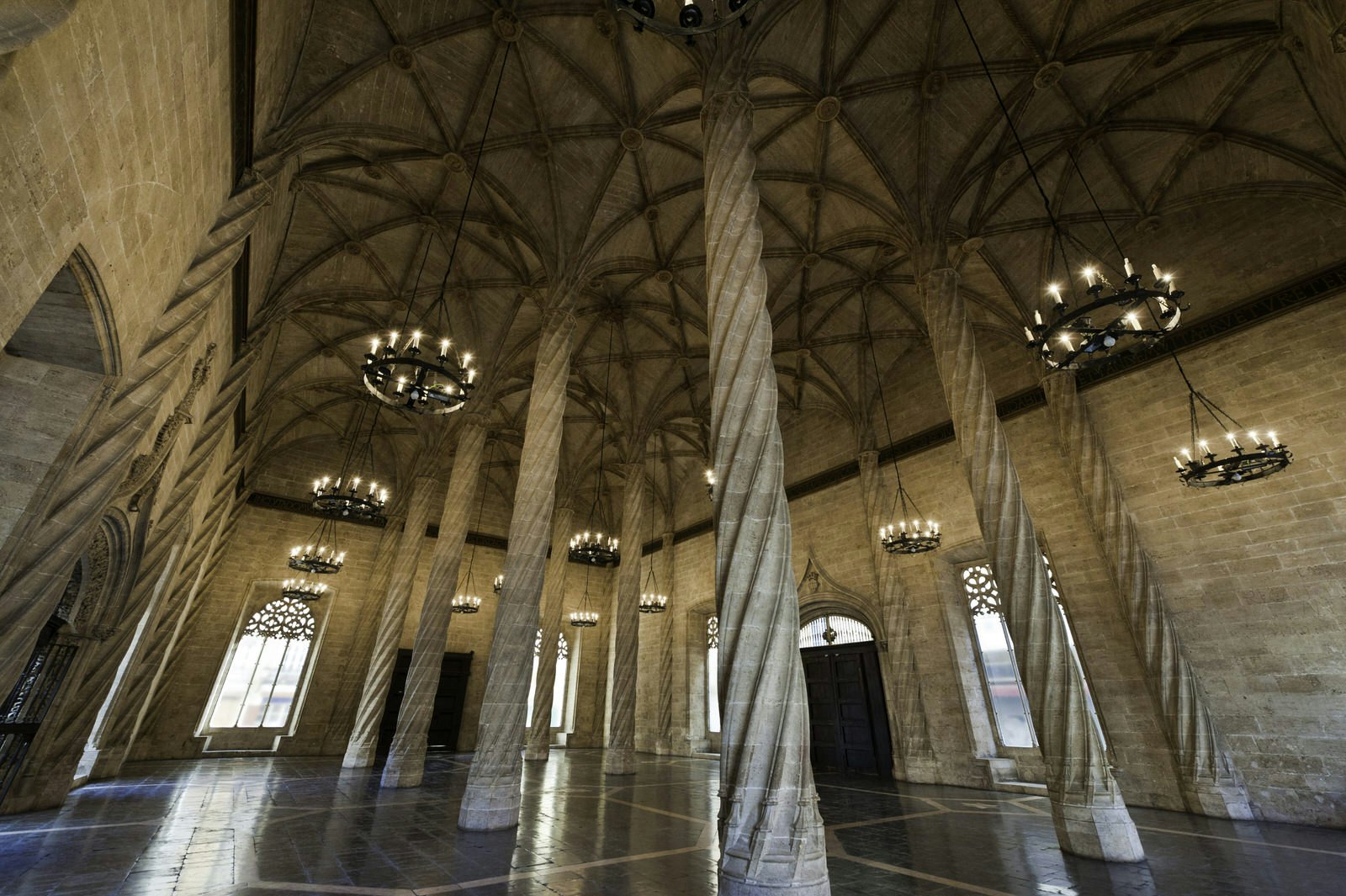
Ciudad de las Artes y las Ciencias
These days, Valencia’s most famous symbol is the fantastic, futuristic Ciudad de las Artes y las Ciencias. For the most part designed by Valencian architect Santiago Calatrava, this complex of cultural venues was a controversial project that had run massively over budget by the time it was completed in 2005. Nonetheless, at the very least it's hard to deny the visual impact of the majestic set of structures. They house facilities including a science museum and an IMAX cinema; one of the highlights is the Palau de les Arts Reina Sofía, a huge beetle-like arts centre that outside of performance times runs tours with summaries in English.
Passing right by the complex are the Jardines del Turia, a glorious park which snakes for 9km through the city along the repurposed riverbed of the former Río Turia.

The Eixample: Valencia's new town
North of here is the Eixample, Valencia’s graceful new town, laid out in the 19th century after the city got too big for its old town walls. Among the attractions here is the wonderful Mercado de Colón, which these days is no longer a market but houses restaurants and upscale food stores. Ma-Khin Cafe is one of the standout spots, serving up inventive Asian fare with European influences. Consider going for the tasting menu, with knockout dishes including an ocean-fresh oyster with kimchi and a mouth-watering Malabari fish curry with coconut, mustard seeds and tamarind.

An evening in Russafa
Don’t miss Valencia’s relentlessly trendy Russafa quarter. It’s easy to see the appeal: this neighbourhood is a confection of beautifully preserved, colourful townhouses, home to seemingly endless options for shopping, drinking and dining. While great to explore during the day, it's at night that this place really comes into its own. Ubik Café, a bar-meets-bookshop with a community vibe, is ideal for an evening drink; then a few minutes’ walk away stop for dinner at Canalla Bistro. Crates suspended from the ceiling, black-and-white furniture, and cartoons on the walls create a laid-back atmosphere in which to enjoy small plates from across the globe that include pibil pork tacos, vegetable tempura and a pastrami sandwich.

Playa de las Arenas
One of Valencia’s biggest joys is its proximity to the beach – from the city centre, it’s a quick 3km bus or tram ride to huge expanses of golden sand that stretch for 4km along the coast. Playa de las Arenas is a popular choice, but since it's 100 metres wide, there’s more than enough room here for everyone, plus plenty of eating and drinking options. If you work up an appetite swimming then stop at Portolito for lunch – it’s a decent place to try local speciality fideuà, which is similar to paella, but made with fine pasta instead of rice.

La Albufera, a beautiful lagoon
For some sublime natural scenery just a few kilometres outside Valencia, head to La Albufera: a vast freshwater lagoon that is home to fantastic birdlife, with around 90 species regularly nesting here. The fields around the lagoon supply the rice for Valencia’s famous paellas. You can take boat trips out onto the lagoon from the sleepy little settlements of El Palmar or El Saler. Bus 25 runs from central Valencia to El Saler and El Palmar every 20 minutes or so.
Tom travelled to the Valencia region with support from comunitatvalenciana.com. Lonely Planet contributors do not accept freebies in exchange for positive coverage.







